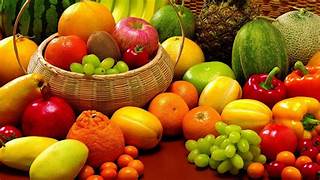Children Diet Nutrition & growth
Children Diet , Nutrition & growth Healthy Eating Habits for Growing Children. Essential aspects of children diet, introducing solids, managing picky eating, and promoting a balanced diet.
CHILD HEALTH
Introducing Solids: The First Culinary Adventure
When to Start Introducing Solids:
Introducing solid foods is an exciting milestone for both parents and babies. Typically, it’s recommended to start around 6 months of age when your little one shows signs of readiness, such as sitting up with support and showing interest in food.
First Foods: What to Offer?
Begin with single-ingredient purees like mashed bananas, sweet potatoes, or rice cereal. Gradually introduce a variety of fruits, vegetables, grains, and proteins. Remember to wait a few days between new foods to watch for any allergic reactions.
Feeding Tips:
Patience: Babies may make funny faces or spit out new foods. Be patient and keep offering.
Texture Progression: Gradually transition from smooth purees to thicker textures and finger foods.
Avoid Honey: Do not give honey to infants under 1 year due to the risk of botulism.
2. Picky Eating: Navigating the Challenges
Common Picky Eating Behaviors:
Picky eating is normal during toddlerhood. Here’s how to handle it:
Food Jags: Toddlers may fixate on one food for days and then suddenly reject it. Stay calm and offer a variety of options.
Food Refusals: Toddlers often refuse foods they loved yesterday. It’s part of their development.
Feeding Tips:
Role Modeling: Be a positive role model by enjoying a variety of foods yourself.
Offer Choices: Let your child choose from healthy options. For example, “Would you like carrots or peas?”
Avoid Pressure: Avoid forcing your child to eat. Mealtime battles can create negative associations with food.
3. Building a Balanced Diet: Nutrients and Food Groups . Essential Nutrients:
Protein: Vital for growth and repair. Include lean meats, poultry, fish, eggs, legumes, and dairy.
Carbohydrates: Provide energy. Whole grains, fruits, and starchy vegetables are excellent sources.
Healthy Fats: Essential for brain development. Avocado, nuts, and olive oil are great choices.
Vitamins and Minerals: Encourage a rainbow of fruits and vegetables for a variety of nutrients.
Food Groups:
Fruits and Vegetables: Aim for a colorful plate. These provide vitamins, fiber, and antioxidants.
Dairy: Choose low-fat or non-fat options for calcium and vitamin D.
Grains: Opt for whole grains like brown rice, quinoa, and whole wheat bread.
Proteins: Include lean meats, fish, poultry, beans, and tofu.
Hydration:
Water: Encourage water intake throughout the day. Limit sugary drinks.
Conclusion: Nourishing Your Child’s Growth
Remember, every child is unique, and their nutritional needs may vary. Trust your instincts, consult with your pediatrician, and enjoy this exciting journey of nourishing your child’s health and well-being. 🌟👶🥦
Disclaimer: This blog post is for informational purposes only. Always seek professional advice for personalized recommendations.


